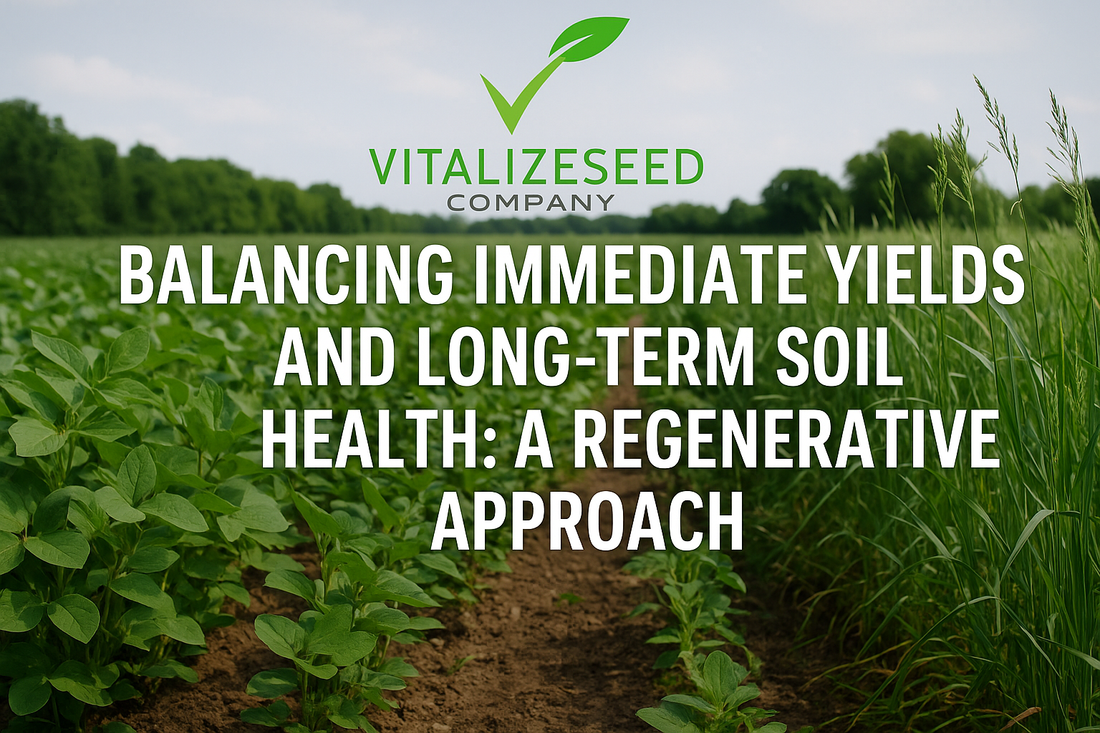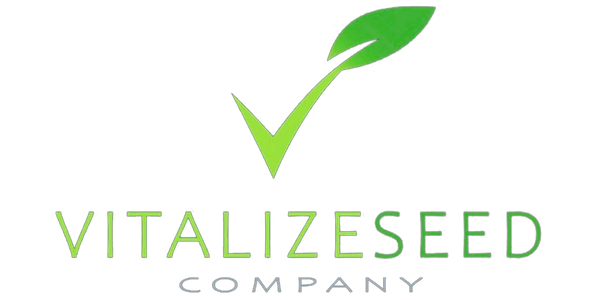
Balancing Immediate Yields and Long-Term Soil Health: A Balanced Approach
Share
At Vitalize Seed, our mission goes far beyond simply supplying seed. We’re committed to advancing healthy soil through pragmatic systems that balance immediate crop productivity with long-term sustainability. This philosophy comes to life in our One-Two System, which strategically sequences cover crops to support nutrient cycling, biological activity, and soil structure across the seasons.
Short-Term Gains: The Role of Foliar Sprays
Foliar applications are valuable tools for addressing specific nutrient deficiencies and supporting plant performance during the growing season. For example, our Fish Fert + Humics is used by growers seeking to support plant vigor when conditions warrant.
Foliar sprays can:
- Correct Certain Micronutrient Deficiencies: Foliar feeding can provide quick uptake of elements like zinc, manganese, and boron under specific conditions.
- Support Photosynthetic Function: Nutrient supplementation can help sustain chlorophyll production when soil uptake is constrained.
- Encourage Root Activity: Healthier shoots can lead to stronger root systems, which may increase root exudation and microbial interactions in the rhizosphere.
It’s important to note that foliar feeding should not be viewed as a replacement for foundational soil fertility. These sprays are most effective when the soil’s physical and chemical properties—particularly pH and cation saturation levels—are also optimized to meet the plant’s baseline needs.
Long-Term Sustainability: Building Soil from the Ground Up
Improving soil health is a gradual process that requires consistent management. Effective strategies include:
- Organic Amendments: Manures and composts supply organic matter and nutrients while also supporting microbial populations and improving soil aggregation.
- Base Saturation Management: Adjusting cation ratios—such as calcium, magnesium, and potassium—can influence soil structure and nutrient availability when done in context with soil test data.
- Cover Cropping: Diverse cover crops can protect soil, support nutrient cycling, and contribute organic matter. Matching the carbon-to-nitrogen ratio (C:N) between subsequent plantings can influence residue breakdown and nutrient availability.
- Reduced or No-Tillage: Limiting soil disturbance helps maintain structure, preserve organic matter, and reduce erosion and microbial disruption.
- Microbial Inoculants: These may help support biological diversity, especially in soils that have been disturbed or depleted. I look at these as insurance, but not necessarily a guaranteed yield driver.
When applying organic or synthetic fertilizers, it is important to consider placement and timing to ensure they are accessible to plants. For example, phosphorus is relatively immobile in soil, and its efficiency can often be improved with appropriate placement, source and biological activity. For more on this, refer to our article on phosphorus efficiency in no-till systems.
Our Nitro Boost and Carbon Load blends are designed with these principles in mind.
- Nitro Boost supports nitrogen fixation and soil nutrient capture ahead of fall planting.
- Carbon Load, with a higher C:N ratio, contributes to surface residue that helps maintain soil coverage and build organic material.
Integrating Practices for Soil Management
Soil health is best addressed through an integrated approach that spans both short- and long-term needs.
- Soil Testing: Accurate, regular testing is essential to identify nutrient levels, pH, organic matter content, and cation balance. From there, for example, fertility inputs—such as Vitalize Micros pre-plant, Seed Feed at planting, and Fish + Humics foliar treatments—can be selected and applied with purpose.
- Biological Inputs: Products like our Seed Armor + Inoculant and Spectrum + Myco are formulated to introduce and support beneficial microbes. While they do not replace soil NPK, they may support root development, nutrient cycling, and uptake as our systems were before more suitable.
- Adaptive Management: Each farm and plot is unique. Reviewing soil tests, identifying goals, and crafting tailored solutions ensures inputs align with crops and soil needs.
Balancing immediate productivity with long-term soil health is both practical and increasingly essential. When short-term tools such as foliar sprays are integrated within a framework of sound soil management—guided by data and context—growers can make more informed decisions that benefit both today’s crop and tomorrow’s soil.
Explore our Habitat Journal for more insight or contact us to build a system tailored to your soil, crop, and goals.
Thank you for reading.
